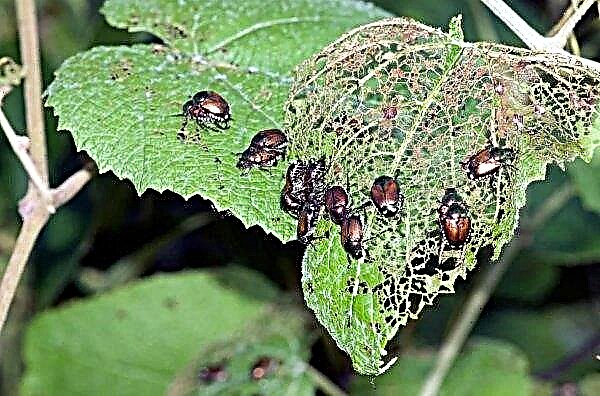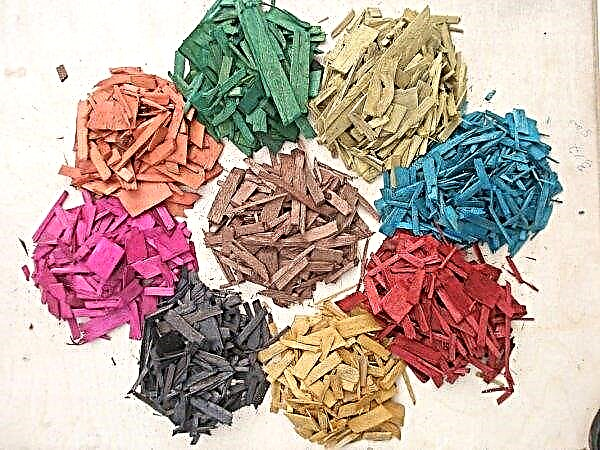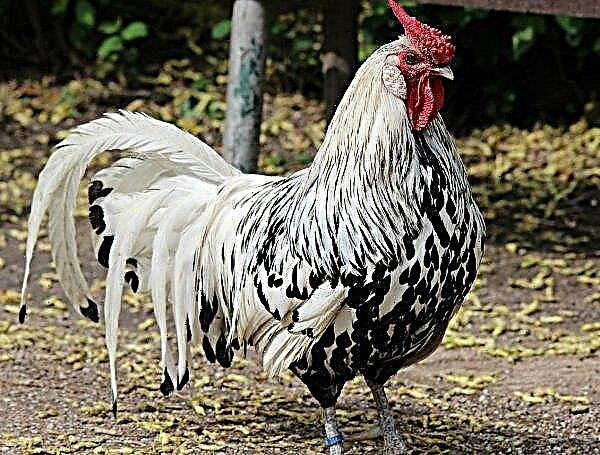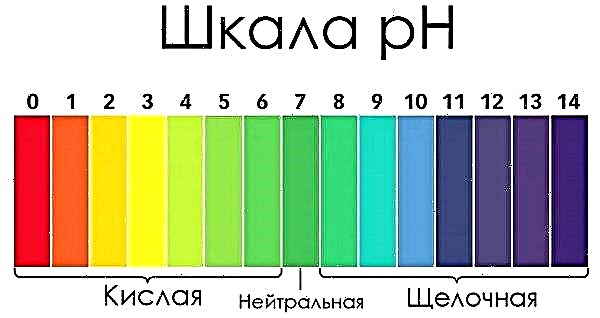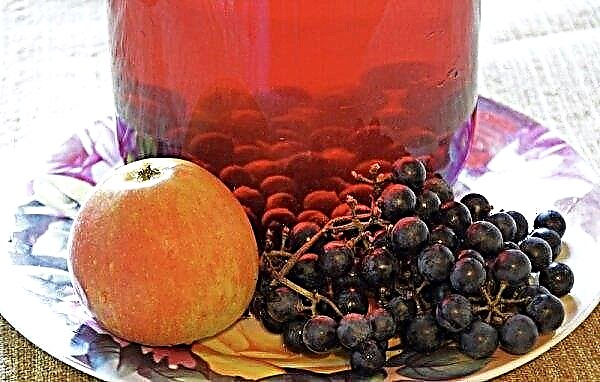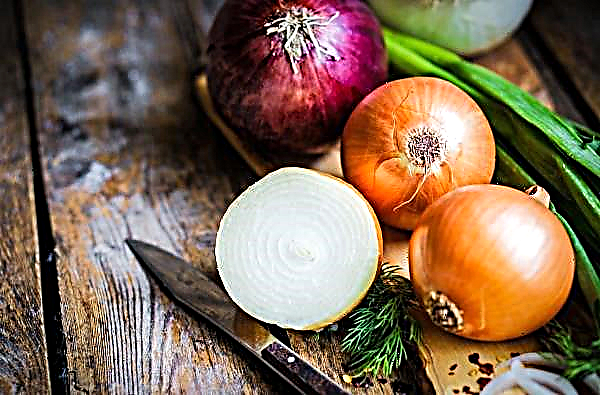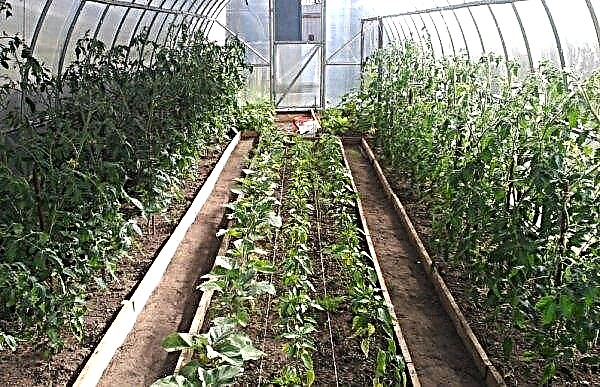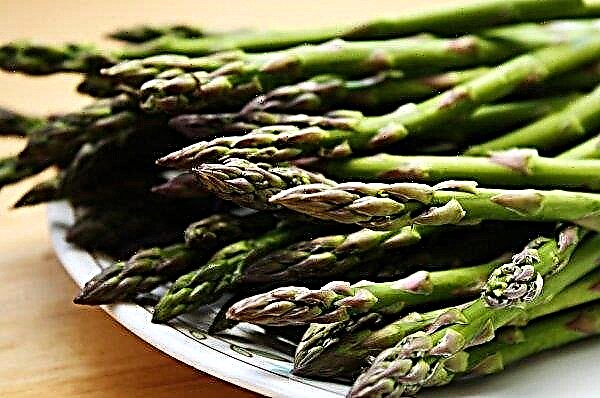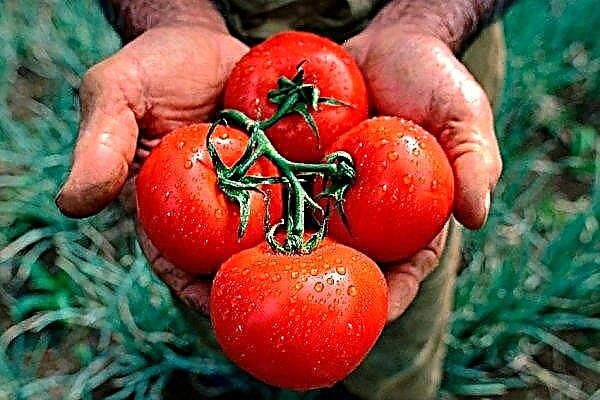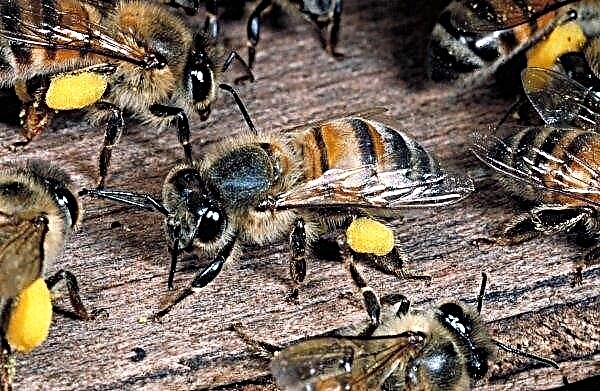Thuja is a popular evergreen that is used to create hedges, single plantings in squares and next to buildings. In order not to make a mistake with the selection of varieties, it is important for the gardener to know what height this or that tree reaches. Read more about how quickly the thuja grows and how much time it needs to reach its maximum size, read in the material.
What affects the growth rate
The growth rate of conifers, like other trees, is affected by a genetic predisposition. Some varieties have an annual growth of 20–30 centimeters, others grow for a long time, growing only 5–10. This means that their maximum height will be different.
Also very important factors for a tree are: lighting, air temperature, watering and soil fertility. An abundance of nitrogen and access to water will maximize annual growth rates. But just do not over-wet, so that rot does not begin. But minimal moisture will slow growth.

Thuja growth per year
The genus thuja is represented by 5 different species, each of which has its own giants and dwarfs. And of course, each includes dozens of varieties. Therefore, it is impossible to apply the concept of annual growth to a group, but individual plants from it can be noted.
| Types of Thuja (Thuja) | Grade | Tree height 10 years after planting / Annual growth |
| giant (plicata) | Aurea (Aurea); Canadian Gold (Canadian Gold); Cuprea (Cuprea); Elegantissima (Elegantissima); Excels (Excelsa); Green Survival (Green Survival); Holly Turner (Holly Turner); Pygmy (Pygmaea); Rogers (Rogersii). | 3 m / 15–30 cm; 4 m / 30 cm; 1.5 m / 15 cm; 3 m / 15–30 cm; 3 m / 30 cm; 30 cm / 2.5 cm; 3 m / 30 cm; 1.5 m / 15 cm; 1.5 m / 15 cm; 1.5 m / 15 cm. |
| Japanese (standishii) | - | 4 m / 30 cm |
| Korean (koraiensis) | - | 4 m / 30 cm |
| western (occidentalis) | Alba; Beaufort; Brabant; Columbia; Columna; Compacta; Cristata; Danica; Dumosa; Emerald Variegated ) | 4 m / 30 cm; 1.5 m / 15 cm; 4 m / 30 cm; 3 m / 30 cm; 4 m / 30 cm; 1.5 m / 15 cm; 4 m / 30 cm; 30 cm 2, 5 cm; 30 cm / 2.5 cm; 3 m / 30 cm. |
| eastern (orientalis) | Nana | 1.5 m / 15 cm |
Representatives from the University of Arkansas, USA, conducted a study of the rate of plant development. They planted several crops on the site in the field, including the Green Giant. All plants received very little fertilizer and water in dry weather. Over the 7 years of development, Green Giant overtook the rest of the varieties and grew to 7 m. However, he was not sick and was not affected by pests. On the territory of Russia, varieties of western thuja are mainly sold. Therefore, for comparison, you can take several of them.

If we take the height of the seedling when planting for 0.6-0.8 m and take into account the growth rate indicated by the producers of the variety, then we obtain the following indicators:
- Smaragd and Brabant will reach a height of 2 meters in 4 years;
- Bifort and Kompakta - after 9 years.
And most likely the calculation will be erroneous. Conscientious nurseries indicate not only the cost and growth of the tree, but also its age. Therefore, it is easy to find out that Smaragd 0.6 meters high is a 6-year-old seedling, and the age of a 2-meter-high specimen of the same variety is 9 years. Tue Compact with a height of 0.6 m in just 4 years. But it has already significantly outpaced Smaragd in growth, despite the fact that Kompakta has a maximum annual growth of 15 cm, and Smaragd has 30 cm.
Therefore, when buying, be guided by the fact that it is better to buy thuja no older than 2-3 years with a height of at least 40 cm in the nursery, which indicates all the parameters. And the growth of a seedling in your area will depend on many climatic factors.

High grades
Eastern thuja and its varieties are planted in parks and squares most often. Despite the fact that in the natural environment trees of this species reach a height of 18–20 m, smaller varieties are used for landscape design. Nigra (Nigra) - one of the most popular grows up to 6 m and a width of 1.8 m. Lutea (Lutea) and Pyramidalis (Pyramidalis) reach the same size. This is not to say that all trees of this species are tall. No less popular Smaragd (Smaragd) will grow by only 4.5 m in height and 1.5 m in width.
Important! Most varieties of arborvitae are genetic mutations. Propagation of such plants occurred by cuttings. Therefore, it is impossible to grow it from seeds — get the tree that was before the mutation.
It is believed that the western thuja is larger than other species and grows faster. But the largest is Green Giant with a height of 15–20 m and a maximum width of 6 m. The tree is a hybrid of the Japanese and folded arborvitae. In a year it can grow by 1.5 m. Among folded thuja there are also tall trees, reaching a height of 15-24 m. The variety Zebrina used in landscape design grows to 9-10 m, as does the thuja Hetz Wintergreen )

Medium
Not everyone needs tall, narrow pyramidal trees with a fast growth rate. Some landscape situations require plants to be more compact with a slow or moderate rate of development. And of course, among decorative thuja there are some. This applies to different types of shrubs growing in the form of a slide or ball.
Popular medium-sized varieties of western thuja:
- Brandon (Brandon) - 4,57 m;
- Degroot's Spire - 3.05 m;
- Smaragd (Smaragd) - 4.57 m;
- Holmstrup - 2.44 m;
- Rheingold - 1.83 m;
- Sunkist - 3.66 m;
- Vareana (Wareana) - 3.05 m.

Dwarf
Dwarf varieties are considered whose height does not exceed 1.5 m, and often it hardly reaches 0.5 m. Basically, they are represented by shrubby forms. And they can be either multi-barrel or single-barrel.
Among the most popular:
The fastest growing thuja
The most energetically growing is considered the Green Giant (Green Giant). This fast-growing tree is a hybrid of folded and Japanese arborvitae. Its natural pyramidal or conical crown is characterized by thick, rich green needles that darken or slightly bronze in winter. For a year, under good conditions, the Green Giant can grow by 1.5 m. Plant it as a hedge or screen. It is resistant to gusts of wind and fully withstands icy snow masses on its branches.
Important! A plant needs 17 nutrients to grow and develop, including nitrogen, potassium, calcium, magnesium, sulfur, and phosphorus. Only natural organic fertilizers can provide them, since they contain these elements. They usually consist of only 3 components: nitrogen, phosphorus and potassium.
How to accelerate growth
The actual growth rate that you will observe is very little up to you. In order to maximize it, trees need to provide a good supply of nutrients and moisture. At the same time, be sure to follow the instructions of the variety producer and try not to abuse fertilizers. Since their excess will be harmful to any tree or shrub.
Four main factors influence plant growth:
- shine;
- water;
- temperature;
- nutrients.
These four elements affect growth hormones, causing it to grow faster or slower. Changing any of the four factors can cause stress in the plant, which stops or changes growth.
 The better developed the root system, the greater the annual growth.
The better developed the root system, the greater the annual growth.
Also keep in mind that the growth rate also depends on the roots. A small seedling has a small root system. And if a fork is indicated for annual growth, for example, 5–10 cm, then under the best conditions it will reach only 5 cm. As it develops, it grows roots and becomes able to nourish a large crown.
Is it possible to slow down the growth of thuja
Each plant in the process of evolution adapted to a specific climatic zone. When grown in another, its growth may slow down. The same thing happens with other factors: lighting or watering.
So, if you plant Kolumna, intended for cultivation in the 5th winter hardiness zone with a minimum winter temperature of -26 ° C outside the Urals, where you need to plant thuja, designed for the 3rd zone and withstanding temperatures from -34 ° C to -40 ° C, then most likely, the seedling of Kolumna will die in the first winter. But the gardener may try to create a winter shelter for him and hope that he can acclimatize.
Did you know? In China, they believe that the branches of the thuja, if you bring them into the room, are able to expel evil spirits from there.
Thuja needs moist soil. The lack of moisture will lead to drying and falling of part of the needles, and then to the death of the tree. It should also be noted that it consumes water very slowly. If outflow of water from the soil is not organized, then during frequent rains or with heavy watering, the tree will die, but already because of the decay of the root system. Therefore, if you need a plant with a small growth - get the appropriate variety.
Nutrient-rich soil is the only factor that can accelerate tree growth. But applying an extra dose of fertilizer can harm and become a cause of the disease. Therefore, for starters, you need to evaluate whether there is really a lack of nutrients in the soil. To do this, measure the annual growth of any plants in the selected area and compare with the standard. If a 15-30 cm fork is indicated for the thuja, but its annual growth is only 10 cm, then fertilizer must be applied.
 The correct composition should be balanced, i.e. contain an equal amount of nitrogen, phosphorus and potassium. For example, 10-10-10. It is introduced in early spring before the start of active growth.
The correct composition should be balanced, i.e. contain an equal amount of nitrogen, phosphorus and potassium. For example, 10-10-10. It is introduced in early spring before the start of active growth.
In the event that there is a desire to slow growth, but at the same time feed the thaw, buy fertilizer with a reduced nitrogen content. For example, 5-10-10. This will make it possible to develop the root system while slowing down the growth of green mass.
Thuja growth depends on many factors, including climatic ones. Influencing it is difficult. Therefore, always start laying your garden with a selection of plants that advise your size needs.

